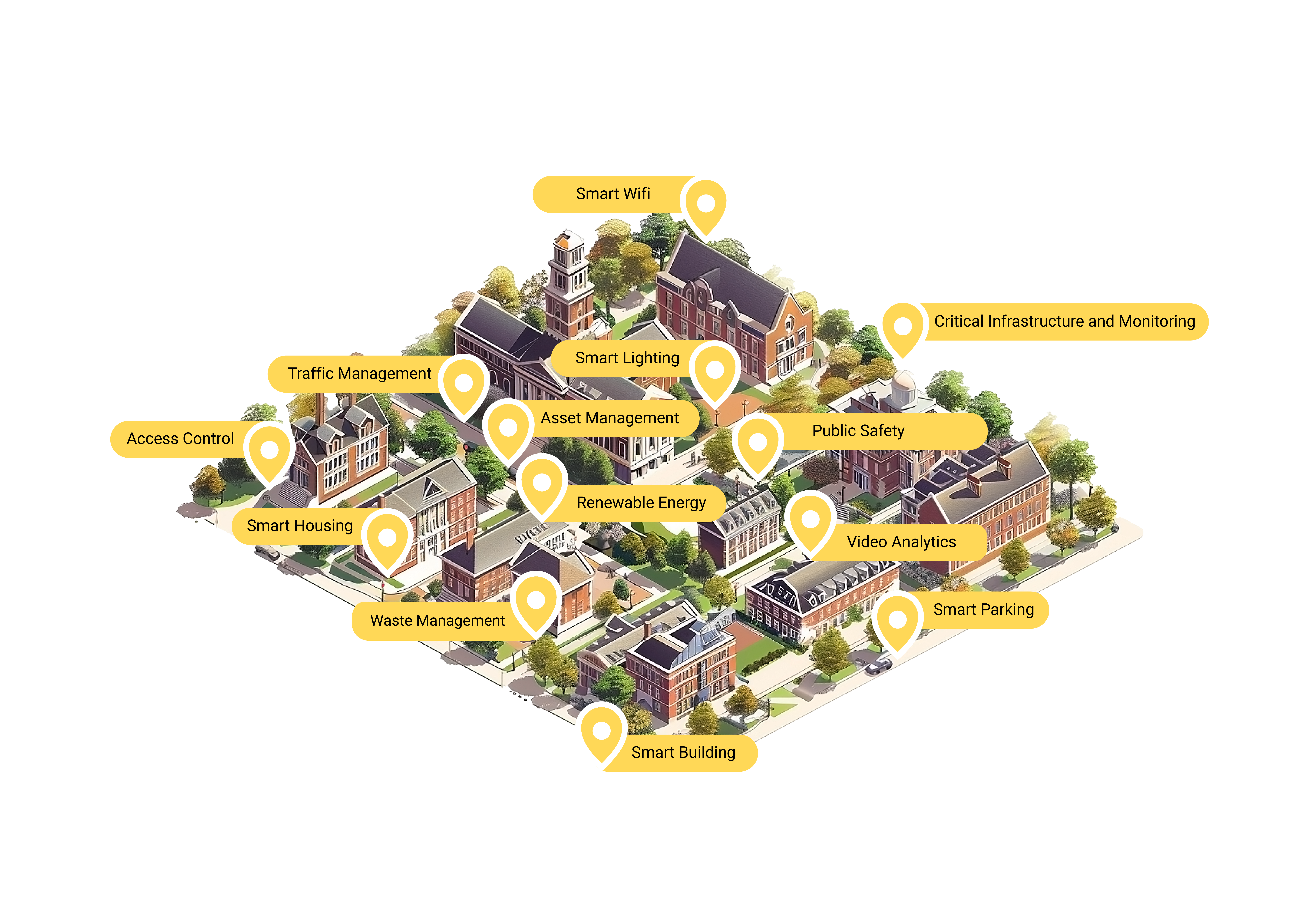Photo: Smart technology infrastructure and seamless connectivity are equally important outside the classroom to extend the benefits of automated facilities management tools for greater campus safety and efficiency.
By Erin McDannald
Generation Z—those born roughly between 1996 and 2010—came of age in an entirely digital world, which has had profound implications for the role of technology in their classrooms. Their teachers embraced the same devices that Millennials went to detention for using, creating lesson plans that utilized the tools Gen-Z students are most familiar with. Expectations for tech-enabled education have driven similar changes at the university level. As Generation Alpha follows quickly behind them, those expectations are increasing exponentially.
Gen Alpha’s unprecedented access to information online and climbing standards for connectivity have transformed the demands for modern-day education spaces. The “smart campus” is emerging as a model for leveraging the power and ubiquity of technology to improve the student experience, enhance the quality of education, and increase operational and administrative efficiency. By equipping education environments with smart facilities management systems and harnessing the potential of artificial intelligence (AI) integration, the future of learning is here.
AI in the Classroom

Photo Credit (all): Courtesy of Elevated
The smart campus is adaptive by design, equipped to support different learning styles and instruction methodologies simultaneously. A powerful, reliable, and secure data infrastructure forms the campus’ backbone, allowing each student, teacher, and classroom to seamlessly connect to interactive educational software, digital textbooks and online testing platforms. AI works in the background to adapt material to match the pace and preference of each student at scale, creating a more inclusive and tailored classroom experience. Teachers can leverage this data to identify key knowledge gaps and structure dedicated lessons for sustained classwide success.
A healthy, underlying environment is essential to this ecosystem. Studies have shown that air quality, light and sound can all impact cognitive performance. Clean air is also critical for supporting developing and vulnerable immune systems. Sensors—which can range in size from that of a penny to a small, household thermostat—monitor classroom conditions and send signals to the larger campus MEP control system when values fall outside optimal levels.
Group-based activities and classwide discussions can increase the concentration of carbon dioxide (CO2) in the air, which should remain below 1,000 parts per million (ppm) according to the American Society of Heating, Refrigeration and Air Conditioning Engineers (ASHRAE). Studies have measured concentrations as high as 4,000 ppm in classrooms around the world—making this technology even more critical for maintaining a non-toxic learning environment. Simultaneously, ongoing exposure to bright-white screens and overhead lighting can lead to eye strain and fatigue.
Automation tools trigger real-time adjustments to ensure that the classroom is continuously fine-tuned to student and teacher wellbeing and focus. Further, these metrics can be fed to wall-mounted dashboards, allowing students, teachers and even parents to see the system at work.
In addition to supporting academic performance, AI enables the campus system to learn from classroom data—such as when students change classes or when they’re out at recess—to optimize how energy is produced, used, and stored to support sustainability and efficiency while reducing costs. By reading changes in sensor data, the system determines where power can be saved based on real-time occupancy to strike a balance between comfort and efficiency.
At the higher education level, the energy savings can be even greater, because classroom use is often less predictable than a K-12 bell schedule. By removing the guesswork of aggregated modeling and leveraging machine learning to automate best practices, administrators can recapture the funds once spent on unnecessary resource usage and redirect those savings into other campus programs.
Beyond the Classroom
Smart technology infrastructure and seamless connectivity are equally important outside the classroom to extend the benefits of automated facilities management tools for greater campus safety and efficiency.
Security is paramount in both K-12 and higher education environments, and an AI-supported detection and response program can be a critical differentiating factor in emergencies. Smart cameras can analyze and flag behaviors that may indicate potential risk—such as someone lingering in an unusual area or wielding a weapon—prompting security personnel in real-time to assess the situation. Sensors can be used to detect sounds like gunshots or breaking glass anywhere on campus, alerting teachers and administrators as well as older students via text message to avoid the area until it’s been investigated. AI can also automate these systems to dial 9-1-1 and dispatch nearby officers to campus for back-up.
When integrated with university campus maps and smartphone apps, traffic management technology can also make it easier for new students to navigate to class and find available parking.
Read more on making the smart change in the May/June edition of School Construction News.
Erin McDannald is the chief executive officer of Lighting Environments and its sister companies Elevated and Environments, has been a dynamic force in lighting design and construction for over two decades, championing growth, innovation, and enhancement of the human experience at every step.


